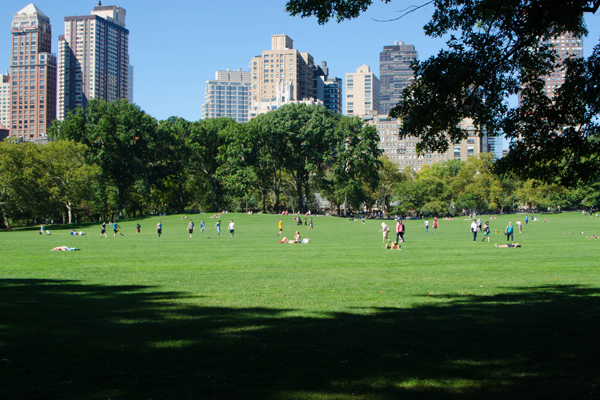Tools for Equitable Park Planning and Design

This last year has provided an awakening on issues of equality and our environment. One issue in particular that impacts communities nationwide and can be enhanced by landscape architects, is the ease of access and quality of parks. This topic of access to quality parks and open space has been given emphasis throughout the COVID-19 pandemic as parks and open space became vital places to work, live, learn, heal, and seek refuge. Coupled with looming environmental challenges and the ability for parks and open space to help protect and mitigate these impacts, there has never been a better time to focus our attention on the topic of creating healthy and equitable parks. This is our call to action.
Throughout the COVID pandemic, communities of color and those in stressed socio-economic areas have suffered from the inability to social distance and recreate in a safe and therapeutic environment. This adversity has compounded existing health issues impacting these communities, such as diabetes, hypertension, and obesity which are intertwined among various other environmental health hazards and conditions. Many of these communities are also at higher risk of adverse environmental impacts and are typically at a higher risk of displacement or damage due to extreme weather events. Considering the current impacts of COVID and future challenges they face from changing environmental conditions, one thing is evident, that immediate attention is needed to address our equity and abundance of parks and open space for the health, safety, and wellbeing of our communities across America.
Though parks and open space may seem like a low priority in budgeting for cities and agencies, it’s time for a paradigm shift to seeing these resources as significant or equal to vital social and healthcare services, as these spaces help to bring communities together and allow for therapeutic opportunities to increase health and physical enjoyment and to connect people with nature. Furthermore, park and open space areas serve as vital green infrastructure for communities facing intensified challenges due to climate change, because they serve as critical space to combat and lower the impacts of potential storms and natural disasters.
Although increasing parkland space is encouraged, there are situations where available land is sparse and the parks that are available may be unevenly distributed, resulting in areas where park space is unavailable within a convenient travel distance. Park access and quality is not a quick or easy matter to resolve as it requires intimate understanding of a park system, its users, the operational and programmatic elements, and various other factors and needs which may result in unbalanced access and quality. One universal guideline is to provide equal access, park amenities, and quality of experience throughout a community as effectively as possible, while allowing parks to serve as a green infrastructure buffer for climate change where applicable.
To achieve this, various elements of a park system need to be assessed; however, two major factors have significant impact: access, or quantity of parks and their distribution, and the quality, or design and capacity of amenities or open space. These are the quantitative and qualitative elements needed to assess a park system’s level of service and are paramount to park planning. As such, they require specific technical tools and techniques to understand the needs and make equitable design and planning recommendations.
To continue reading about these tools and techniques from the American Society for Landscape Architects, click here.
